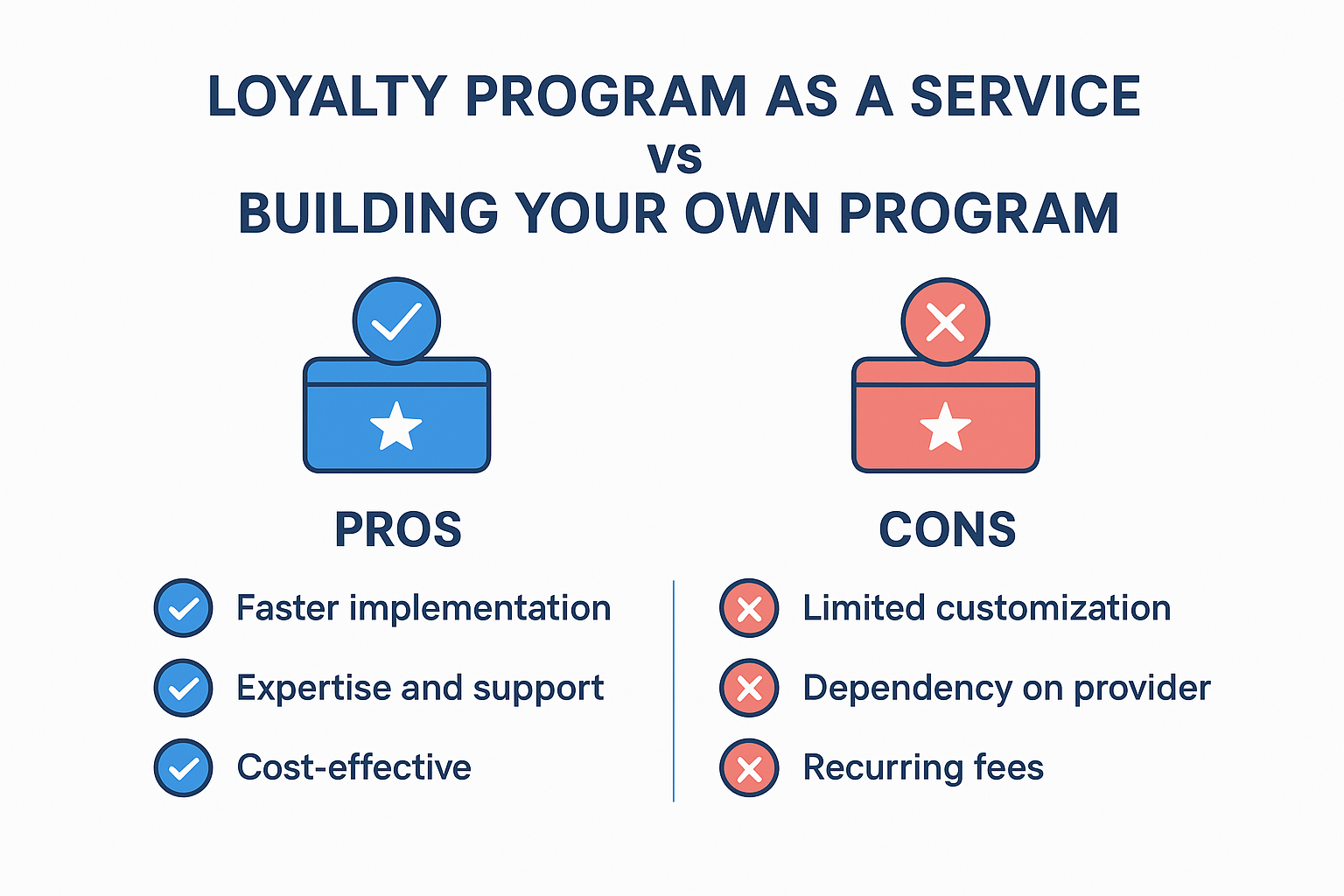Loyalty Program as a Service vs Building Your Own Program: Pros and Cons
Loyalty programs have come a long way from paper punch cards and plastic keychains. Today’s consumers expect sleek digital experiences, real-time rewards, and personalized offers—delivered seamlessly across channels.
For brands looking to launch or upgrade their loyalty program, there’s one big question to answer early:
Should you build your own loyalty platform, or use a Loyalty Program as a Service (LPaaS) provider?
There’s no one-size-fits-all answer, but understanding the pros and cons of each path can help you make a smart, scalable decision that fits your goals and resources.
What Is a Loyalty Program as a Service?
“Loyalty Program as a Service” is a cloud-based, ready-to-deploy loyalty solution you plug into your existing marketing tech stack. These platforms come with pre-built features like points management, customer dashboards, gamification tools, and even payment integrations—so you don’t have to build anything from scratch.
Think of it like Shopify for loyalty. You bring the brand, the audience, and the strategy—the platform handles the rest.
Now, let’s compare.
PROS of Using a Loyalty Program as a Service
1. Speed to Market
LPaaS solutions are built to launch fast. Instead of spending 6–12 months designing, coding, and testing your own platform, most service-based solutions can get you live in weeks—sometimes days.
For brands trying to hit seasonal or year-end goals, this agility is a major advantage.
2. Lower Upfront Costs
Custom platforms come with big upfront development fees—design, engineering, QA, security. LPaaS solutions are typically subscription-based, so you can spread costs over time and avoid heavy initial investment.
This also makes testing easier—want to try a loyalty campaign in one region before scaling? No problem.
3. Proven Tools and Features
Loyalty program providers have already built, tested, and optimized the tools you need:
Referral tracking
Gamified challenges
Instant rewards
Points engines
Tiered experiences
You don’t have to reinvent the wheel. Most platforms are built using best practices based on thousands of campaigns.
4. Built-In Compliance and Security
Customer data, payment systems, age verification—there’s a lot at stake. Good LPaaS providers handle regulatory and compliance needs so you don’t have to.
That includes GDPR, CCPA, sweepstakes laws, and even alcohol rebate compliance in certain states. (And yes, that can get complicated fast.)
5. Ongoing Support and Innovation
With a service provider, you’re not just buying software—you’re gaining a team. Most platforms roll out regular updates, new features, and strategic support as part of the relationship.
That means your program evolves without needing constant in-house investment.
CONS of Using a Loyalty Program as a Service
1. Less Flexibility for Custom Features
If you have a very specific loyalty mechanic in mind—like pairing loyalty with a connected device, or building a one-of-a-kind user interface—you might find some service-based platforms limiting.
Most LPaaS providers offer flexible APIs and custom branding options, but they may not support completely custom user journeys or business rules without additional work.
2. Recurring Subscription Costs
While LPaaS platforms save on upfront costs, they do require ongoing subscription or usage fees. For high-volume brands, those costs can add up—though they’re often offset by faster time-to-market and better performance.
Be sure to model long-term ROI based on your growth plans.
3. Vendor Dependence
Choosing a loyalty platform means trusting an outside provider with a key part of your customer experience. If the vendor goes out of business, changes pricing, or sunsets a feature, you could be left scrambling.
Make sure any provider has a solid track record, transparent pricing, and a clear roadmap.
PROS of Building Your Own Loyalty Program
1. Total Control Over Features and Design
When you build in-house, there are no limitations. You control the rules, the experience, the branding, and the data. You can design for exactly what your business needs—nothing more, nothing less.
This is especially useful for brands with complex data systems, unique customer journeys, or ambitious long-term personalization goals.
2. Own the Entire Tech Stack
You’re not at the mercy of another company’s roadmap or priorities. You decide when to update features, fix bugs, or scale infrastructure.
This level of autonomy can be appealing to large organizations with strong in-house product teams.
CONS of Building Your Own Loyalty Program
1. Time-Consuming
Even with a skilled dev team, building a custom loyalty platform takes time. Months of planning, development, QA, testing, and launch delays can cost valuable momentum—especially if you're trying to stay ahead of competitors.
2. Expensive
Custom development isn't cheap. Between engineers, designers, project managers, and ongoing maintenance, costs can easily stretch into six figures.
And that’s just for version 1. Add ongoing maintenance, security patches, and feature development, and the lifetime cost grows fast.
3. Technical Debt
Over time, custom-built systems can become difficult to update or integrate with new tools. What worked for year one might become a headache in year three without consistent upkeep and documentation.
If your team turns over or priorities shift, your once-innovative loyalty program can become a tech burden.
So... Build or Buy?
Here’s a general rule of thumb:
Use a Loyalty Program as a Service if you want to launch quickly, test ideas, keep costs predictable, and access best-in-class tools without the complexity of custom development.
Build Your Own Program if your loyalty strategy is deeply tied to proprietary tech, requires highly unique features, and you have the internal resources to support it long-term.
For many brands, starting with a service-based loyalty program is the smart move—especially if speed, ease, and results are your top priorities. You can always evolve or customize later based on real-world insights.
Final Word
Launching a loyalty program isn’t just about software—it’s about strategy. Whether you go custom or use a platform, success comes from delivering a program people actually want to use.
Make it simple. Make it rewarding. And make it easy to join.


